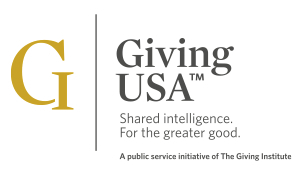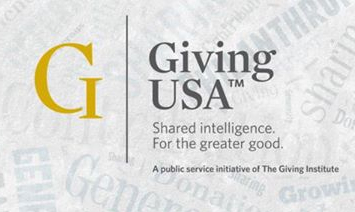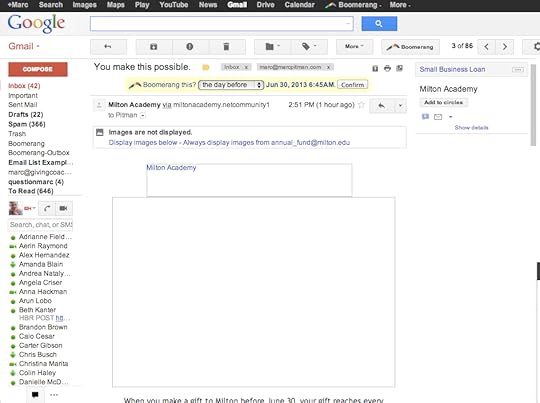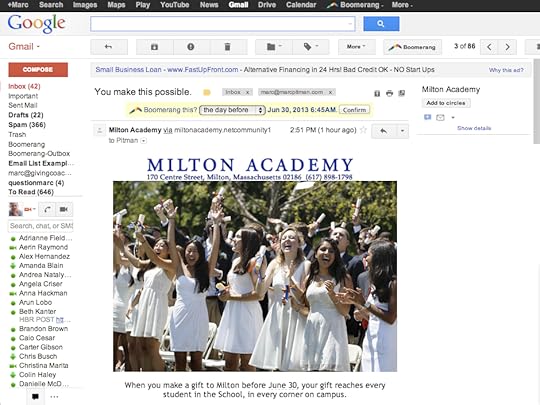Marc A. Pitman's Blog, page 44
June 19, 2013
The secret for nonprofits recovering from a recession – Giving USA
 Yesterday I wrote about Giving USA’s 2013 Report and the highlights about giving last year.
Yesterday I wrote about Giving USA’s 2013 Report and the highlights about giving last year.
At the end of the npVOICES interview with Gregg Carlson of the Giving USA Foundation, Steve MacLaughlin asked for Gregg’s impressions for fundraisers. With 50 years of tracking giving, Gregg shared his take away: nonprofits that kept asking for money during the 2007 – 2009 recession and even made investments in fundraising, have recovered from the recession faster and are even seeing record giving levels.
In Gregg Carlson’s own words:
It’s clear from the results over the last 3 years of improved giving that the charities that continued to provide an opportunity to their family base to make gifts, those charities that continued to invest in fundraising and infrastructure better enabling fundraising to support their mission were the first to come out of the recession. And many of those that did make that a continuing investment in that period are actually at record highs. So when you look at a couple of sectors, they have achieved pre-recession highs. That is healthcare and human services. They made pretty significant investments over the course of the last four or five years. So ‘stay at it’ would be the message. And look for marginal increases that will set you up for success in the future.
The secret to overcoming dips in giving? Stay at it and keep investing
It’s been odd to see nonprofit responses to the Great Recession. I was shocked by the number of organizations that fired their fundraisers. Granted, some of them may have used the recession as an excuse to do something they’d wanted to do for a while. But the seemingly knee-jerk reaction to cut off the many nonprofits largest revenue source – the development office – struck me as ill advised.
Of course, as a fundraising coach, that observation seemed self serving back in the depths of the recession.
But the results are in: the best ways to overcome a recession or a dip in giving is:
Keep asking
As Carlson puts it, keep providing an opportunity to your family base to make gifts. Don’t pull back and stop asking. You may need to ask a bit differently, but you definitely shouldn’t stop.
Invest in fundraising
In the Giving USA studies, even strategic, long-term, marginal investments in fundraising helped charities get out of the hole faster. And those charities that made significant investments are seeing giving at “record highs.”
How are you investing?
The take away from this is clear: how are you investing in your fundraising? Whether you’re a board member or on staff, learning to fundraise more effectively will help your nonprofit meet and exceed its fundraising goals.
Some fundraising experts like Jeff Brooks suggest that if you were to do nothing other than ask more frequently, you’d raise more money. And you wouldn’t irritate your donors like you think you would.
Here are some other options. Sort of a large, medium, and small.
Hire a consultant or a trainer
Consulting can feel like a large investment, but the returns are enormous. If you’re looking for a feasibility study, the findings can set you up for success or save you hundreds of thousands in an ill-timed campaign. One tip: hire a consultant that wants to partner with you, not one that speaks down to you. You have to be smart to be where you are. Your consultant should treat you that way. One consulting firm that I’ve been very impressed with, so much so I’ve worked with them, is Graham-Pelton Consulting. This firm gets results and helps their clients succeed long after the contract is up.
Sometimes hiring a fundraising trainer is the right fit. He or she can come in and train your board or your staff on how specific topics like how to ask for money. As the Milton Hospital case study in the case studies section shows, results from even a simple 3-hour training can be phenomenal.
Hire a coach
I originally got into coaching because of the profoundly positive impact coaching has had on my career. Coaching generally is a cost efficient form of investing. Rather than going to a conference and getting general good information, executive coaching give you tactics and training you put into practice. And you get to check in with your coach, continually honing in on the best way for you and your organization to accomplish its goals.
My coaching clients tell me they love that I have a bigger picture than just their organization. I’m able to share with them trends I’m seeing and figure out how they can capitalize on them. Even more importantly, I’m a “safe person” they can bounce ideas off of in a way they can’t to their boss or staff. Unfortunately, in many nonprofits, brainstorming with your boss or the board can lead them to wonder if they actually hired someone that can lead their fundraising efforts. And brainstorming with your staff can sometimes lead them to wonder if you really know how to direct them. But the coach neither hires/fires you nor is looking to you for direction. So coaching calls become wonderful times of testing ideas and tweaking approaches.
Studies, like that done by CompassPoint, show executive coaching saves nonprofits significant money and helps retain excellent leaders. You can download a PDF of the CompassPoint report at: http://fundraisingcoach.com/articles/ROI.CompassPoint%20Study.pdf
Seek quality do-it-yourself training
There are great products and fundraising books on the market. Those of us that make these products put our best into them. Some such products include my Ask Without Fear! DVD training, the “100 Donors in 90 Days” program, “The Donor Retention Project”, and Tom Ahern’s new 2-DVD set on Donor Communication. These are less expensive than either coaching or consulting and help you raise more money more easily. But they do require you to put the tools into practice without the outside accountability of coaching or consulting.
There are many great fundraising and nonprofit marketing blogs on the web. Lots of them, including mine, offer free fundraising training emails or podcasts. Just check the blogroll to the right of this post for some examples. These often only involve an investment in time but can provide excellent results.
If you use the Flipboard app on your tablet or smartphone, I’ve created a magazine called “The Fundraiser’s Life.” In it, I post the best articles I find around the internet on fundraising and nonprofit marketing, with a little time management and travel hacks thrown in. You can subscribe for free at: http://flip.it/Aagzo
However you invest, keep asking
I realize the last section might have sounded like “pitching.” As a fundraiser, I never shy away from making an ask!
But however you choose to invest, be sure to keep offering your “family base” the ability to give. Asking is the single most important thing you can do to improve your fundraising results!
One of the greatest fundraisers in the country, Tom Ahern, has just released a 2-DVD set. He’s giving his best on fundraising writing and donor communications. To see all he’s packed into these DVDs, go to: Tom Ahern’s Donor Communication DVDs. It’s a steal at the list price but there’s a special introductory offering for 50% off between now and June 28, 2013.
(c) The Fundraising Coach, LLC
Get 100 donors in the next 12 weeks? Learn how: 100 Donors in 90 Days!
Other Possibly Related posts:
Charitable Giving Recovering Faster Than Anticipated – Giving USA
Fundraising Secret #44: Up your giving this year
Developing Your Personal Giving Strategy: A Donor’s Guide to Safe Giving






June 18, 2013
Charitable Giving Recovering Faster Than Anticipated – Giving USA
 In the latest edition of npVoices, host Steve MacLaughlin interviews Gregg Carlson of the Giving USA Foundation about the 2013 Giving USA report.
In the latest edition of npVoices, host Steve MacLaughlin interviews Gregg Carlson of the Giving USA Foundation about the 2013 Giving USA report.
Giving USA 2013
The latest Giving USA report is fairly encouraging. In 2012, $316 billion was given to charity. This means charitable giving showed a 3.5% increase over 2011. Here’s why Carlson sees this as promising:
Third consecutive year of growth
This is the 3rd consecutive year since the depths of the Great Recession that has seen charitable giving grow. This is a big deal because between 2007 and 2009, charitable giving in the USA dropped 15%! If you’re working in a nonprofit, that isn’t a surprise. But a drop in giving had only occurred one other time in the decades we’ve been studying it. And it wasn’t as steep as a 15% drop. Three years of growing shows we’re digging out of the hole.
Faster recovery now predicted
Although it will still be a very slow recovery, Carlson is now predicting it taking only 6-7 years to get back to pre-recession levels of giving. In the interview, he noted that last year he was expecting it to take much longer, over 10 years. Last year’s giving shows an acceleration that is encouraging.
Individuals still reign
As usual, individuals were the largest contributor to the overall giving. Individuals gave 72% of the overall $316 billion, an increase of 3.9%. And when you factor in bequests (which can only be made by individuals) and family foundations (an increasingly popular way for individuals to give) that number rises to 86%.
For nonprofits raising money, this is a good reminder to focus more time on asking individuals than foundations and corporations. The good news? Foundations and corporations are run by individuals! So your time with key individuals is time very well spent.
Giving to arts recovering; giving to religion slipping
Another interesting trend in the Giving USA report is that giving to arts and culture is increasing. In fact, with an increase of 7.8%, this sector had the largest increase. Carlson notes that giving to arts organizations is usually affected by the stock market. As the stock market grows, affluent donors tend to feel more comfortable and tend to be more generous.
On the other hand, giving to religious institutions decreased by another percent to 32% of all giving. Carlson notes that giving to religion used to account for over 50% of giving in the USA. He points to two primary forces at work here. First, increases in giving to religion tends to reflect increases in income. Since income has remained relatively flat, so has giving to religion. Carlson also refers to Pew studies indicating that overall attendance at faith services continues to decline in the USA. So flat incomes and less people showing up weekly both seem to be contributing to an overall decline in giving to faith based organizations.
Disaster relief isn’t as much a factor as anticipated
A final note, as a fundraising coach, I’m often asked by clients how to navigate fundraising around disasters like Hurricane Sandy. Even clients far from the regions affected seem nervous about the impact disaster relief will have on their own fundraising efforts.
Giving USA 2013 is the first look at fundraising for Hurricane Sandy. And the early numbers seem to indicate that the hundreds of millions raised for Sandy relief efforts was still less than 1% of all giving in 2013. Obviously this disproportionately impacts nonprofits in that region and with donors in the affected region. But as you look at your organization’s fundraising in the wake of a natural disaster, these numbers can arm you to reassure your board that donors will still give to causes like yours.
Two actions to take today
I’ve long been a fan of the reports. These help us as fundraisers get a big picture view on fundraising and historic trends going back for decades. As your coach, here’s what I’d like you to do:
Listen to the npVoices interview
As a professional or board member for a nonprofit, you need to know the latest information in fundraising. These 10 minutes give you the highlights and can serve as a launching point for discussions with your board and executive team. The episode is available at: http://www.npengage.com/nonprofit-research/npvoices-episode-4/
Buy the report at the Giving USA Foundation site. This ongoing study is done by a nonprofit partially funded by the sale of the report. So go and get it, even if only the $15 edition of the charts. This is information you should be using to educate your staff and board. But please invest in this research by purchasing the report. A direct link to the store is at: http://store.givingusareports.org/2013-Products-C27.aspx
(c) The Fundraising Coach, LLC
Get 100 donors in the next 12 weeks? Learn how: 100 Donors in 90 Days!
Other Possibly Related posts:
Are You Paying Taxes on Your Charitable Giving?
Are You Paying Taxes on Your Charitable Giving?
Sex, drugs, and…charitable giving?!






June 14, 2013
Developing Your Personal Giving Strategy: A Donor’s Guide to Safe Giving
The tough economy in the wake of the “Great Recession” has made giving tough for many. Add to this the seemingly constant news reports of scam charities ripping off donors, and the joy of giving is practically stolen.
I’m creating a guide currently called “Developing Your Personal Giving Strategy” to help you and your donors give with confidence, avoid scams, and avoid well-meaning but bad recommendations by charity “rating” organizations.
To be among the first to know when this free guide is ready, sign up in the form below!
(c) The Fundraising Coach, LLC
Get 100 donors in the next 12 weeks? Learn how: 100 Donors in 90 Days!
Other Possibly Related posts:
[Guest Post] Why Donors Stop Giving
Whining is not a fundraising strategy
Goal Setting for Personal and Professional Development






June 13, 2013
What an effective email fundraising subject line!
As a fundraising coach, I take a critical look at fundraising letters and emails. It’s always thrilling to be pleasantly surprised!
Last week, I was pleasantly surprised to look in my inbox and see this email subject line:
Email subject line: “You made this happen.”
Isn’t that a great email subject line?! I couldn’t wait to figure out what “this” was! What did I make happen.
Then the email falls apart
Unfortunately, Milton lost an opportunity. When I opened the email, this is what I saw:
Crickets. There isn’t even a creative use of “alt” tags.
Remember: many of your donors don’t enable images. Be ready for that!
Fortunately, when you click the “show images” button, you get to this is awesome image:
The importance of a strong email subject line
Do you see the importance of a strong email subject line? The line “You made this happen” aroused so much curiosity that I was willing to load images even after the school had fired a blank email to me. I knew the image must be really cool, so I did load it.
As you’re getting ready to finish your emails for the end of the year, please forget the awful “There’s still time” emails. Just because June 30 is the end of your fiscal year doesn’t mean it’s an important date to your donors. Your job is to inspire action, not naps!
Try something a little more creative. Like the great email subject line from Milton Academy’s email!
(c) The Fundraising Coach, LLC
Get 100 donors in the next 12 weeks? Learn how: 100 Donors in 90 Days!
Other Possibly Related posts:
Effective email
How to get donors to enable images in email
5 tips for email fundraising






June 7, 2013
Content calendar templates for social media
 Earlier this week, I wrote on how to jumpstart your year end giving. In it, I mentioned scheduling your social media updates to complement your fundraising letters.
Earlier this week, I wrote on how to jumpstart your year end giving. In it, I mentioned scheduling your social media updates to complement your fundraising letters.
Keeping up with your own blog as well as Twitter, Facebook, Google+, and LinkedIn can be daunting. Never mind trying to add Pinterest, Instagram, Tumblr, and others that keep popping up!
Naturally, readers have asked if I had any examples of templates to help schedule your social media updates on your calendar. So I asked colleagues for their favorite samples. The suggestions below were helped by Julia Smith, Danielle Siembieda, John Haydon, Shai Coggins, and Susan Mooney.
5 Social Media Editorial Content Calendar Templates
Here’s LightBox Collaborative’s template hosted on Google Docs. This is for all your media, not just social.
The folks at DonorSnap offered this blog post on content calendaring, along with some calendaring examples.
The folks at Vervely offer some great suggestions in creating your content calendar, including some plug-ins for WordPress.
And here’s a post from ContentMarketingExperience.com about moving from spreadsheets to content collaboration including a review of a tool called DivvyHQ.
This blog post from Hubspot has great ideas on scheduling and includes a link to a template too.
What do you use?
What tools do you find help you keep your story and timing coordinated? Tell us in the comments below!
(c) The Fundraising Coach, LLC
Get 100 donors in the next 12 weeks? Learn how: 100 Donors in 90 Days!
Other Possibly Related posts:
Getting Started with Social Media
Join the conversation in Twitter – get social with “social media”
Social Media: How to convince your boss






June 4, 2013
3 ways to jumpstart year end giving by planning your fall fundraising now
 Nonprofits are making a big mistake when reading studies that show that over 50% of charitable giving happens in December. They are putting off their year end appeals until December!
Nonprofits are making a big mistake when reading studies that show that over 50% of charitable giving happens in December. They are putting off their year end appeals until December!
Did you notice that last December? My inbox was flooded with nonprofit emails begging me to give. This is foolish because it’s confusing when donors give with when donors are approached to give. This is not the best way to do year end fundraising.
Generous year end giving isn’t merely the result of a barrage of appeals and emails in the last weeks of the year. Successful year end fundraising takes strategic planning. Here are 3 tips to help you jumpstart your fall fundraising.
Draft your fundraising letters
Summer is the perfect time to get your fundraising letters ready! I’m still a big fan of regular mail. It gives people something physical to hold and use as a reminder. Snail mail is still a proven source for online giving too!
I recommend sending three letters at these times:
Late August/early September
People are getting back to the regular patterns of school and work so your letter is more likely to be received, read, and responded to.
Early to mid-November
In the USA, this letter could be a Thanksgiving themed fundraising letter. “In this season of Thanksgiving, we are grateful for…”
Mid-December
I like having one last letter hit mailboxes in mid-December. The holiday season gets busy. People won’t always remember the November letter. So get something in their hands that they can put in their bills-to-pay stack so they’ll be able to donate when at the end of December.
As with anything you read about fundraising, you need to test this for your organization. But this has worked well for me and for my clients.
My fundraising letters definitely evolved as I studied copywriting. You can see two examples on my fundraising letters page. While you’re there, sign up for the free 4-part fundraising letter e-course.
Look for ways to reinforce letters with social media
Your donors don’t live solely online or off-line so your fundraising needs to be multichannel. You should be taking the opportunity to reinforce your fundraising letter themes in your Facebook, Twitter, Google+, and LinkedIn updates. And using those sites to ask for money too.
One way could be to simply tweet or post this to your social media accounts: “XYZ Nonprofit supporters: check your mailbox for our latest update!” and include a link to a donation page as well.
Another could be to use the same theme as your letter. If you’re fundraising for land conservation, perhaps you build an “adopt-an-acre” campaign for your fundraising letters. In the fall, you could simply use the same “call to action” in social media and drive people to a specifically themed donation page.
Now is the time to draft the landing pages. And even the updates and an editorial calendar for when you’ll publish those updates. Each platform allows a different amount of text (measured by characters), so planning now can save you lots of time later. According to Andy Crestodina in Content Chemistry: An Illustrated Handbook for Content Marketing, here are the current character limits for updates and posts:
Google+: 100,000 characters
Facebook: 63,206 characters
LinkedIn: 700 characters
Twitter: 140 characters (but aiming for 120 characters allows people space to “retweet” it)
You could create your own social media editorial calendar by plotting these out on a spreadsheet so all you’ll need to do is cut-and-paste them in the fall.
Harness the power of volunteers
People expect us to promote our year end fundraising. But they often take it more seriously when one of their friends promotes our year end giving appeal.
In their great book Content Rules authors C.C. Chapman and Ann Handley recommend taking note of the people that are always responding to your updates. These are the people liking your stuff on Facebook, retweeting it on Twitter, +1ing it on Google+, and even sharing it on LinkedIn, Pinterest, or whatever other network they’re active in.
These can be called your “super fans.” This summer, take keep a post-it note on your desk and write down the name of people that regularly seem to share and interact with your content. Offline sharing too: include people that show up at your office or volunteer or seem to always be telling others about your nonprofit.
You can tell them that you’re experimenting with putting together a “task force” or “advisory group” to help you shape your fall fundraising appeal. Ask them for their email address (if you don’t have it) so you can keep in touch with them. Then run your fundraising letter theme by them. Ask them if the social media plan that accompanies the letters makes sense. And ask them if they’d help share those messages when the time comes.
Your goal is to make it ridiculously easy for them to help share your message. So as your letters get sent and your updates get posted, be sure to email them notifications and links to the respective updates.
If 2012 was any indication of what 2013 will look like, even more charities will be flooding people’s inboxes at the end of the year. But if you do these three simple steps this summer and you’ll be well on your way to benefiting from donors’ year end giving. When they see your communications, it will be tied to a story you’ve been telling them all fall!
(c) The Fundraising Coach, LLC
Get 100 donors in the next 12 weeks? Learn how: 100 Donors in 90 Days!
Other Possibly Related posts:
Fundraising Secret #44: Up your giving this year
Political junk mail can hurt your fall fundraising letters
Survey: Year-end Giving






May 24, 2013
An anonymous letter to a nonprofit board member on how to fundraise
This month’s Nonprofit Blog Carnival involves writing an anonymous letter to your board. Anything was fair game.
Here is my letter.
An anonymous letter to a nonprofit board member
Dear Jane,
Thank you. Thank you so much for giving your time and money to make our world a better place by your work here.
You are more important for this organization than you know. I wish I could really make you believe it.
You are so thoughtful, kind, and considerate.
I know the fundraising solicitations we’re asking board members to help with has you tied in knots. We really aren’t asking you to become someone you’re not. You don’t need to be assertive like George. And we’re not asking you to become pushy like your crazy cousin.
And you don’t need to memorize all the facts about us or a sales script.
All you really need to do is tell your story. You’re already giving your time and money to us. You clearly value our work. All you need to do is share that with the people you’ve identified. You don’t even have to ask them for money. I’ll do that.
I know you well enough to know you won’t believe me. You’re just thinking I’m saying things to make you feel better. But I ran across a tool that might convince you. There’s a free asking styles profile I’d love you to take at http://AskingStylesProfile.com/.
Once you’ve taken it, I’d love to go over it with you.
I am so glad you’re on our board. Thank you.

What would you write?
If you could write an anonymous letter to your board, what would you say?
Ha! I just realized adding my name makes it not anonymous! Oops!
(c) The Fundraising Coach, LLC
Get 100 donors in the next 12 weeks? Learn how: 100 Donors in 90 Days!
Other Possibly Related posts:
[Guest Post] Using Gallup’s StrengthsFinder to help your board fundraise more effectively
Keynotes, workshops, & board member trainings by Marc A. Pitman
Is your nonprofit board socializing enough?






[Guest Post] Helping board members maximize fundraising effort
Peter Genuardi & I are fellow bloggers for npENGAGE. I finally met him at NTEN’s annual conference a couple months ago. He’s the Founder & CEO of Strenth in Members. He helps organizations build better relationships with their supporters by finding social influencers on their email file and driving them engagement and conversion offers through social and email media. Brilliant! I asked him if he’d share with you a way board members could leverage their fundraising engagement. Here it is! You can find more of Peter’s blogs at npENGAGE.

Social Animals: Connecting with Your Supporters
by Peter Genuardi, CEO
Strenth in Members
A few months ago, my phone rang. It was a board member from KUNC, one of my local public radio stations. He was calling me to say “thank you” for my first donation to the station. He just wanted to say hello, and ask if there was anything he could do to make programming better. I was impressed, really, that I received any call from the organization, nevermind someone on the board.
Little did he know that when he decided to call me that I would tell lots of my friends, write a Facebook update urging donation, and write this blog post about it. As a result, my friends have now been exposed to at least three messages from me reinforcing this station the next time they consider giving to public radio.
What if instead of calling me, the board member called my friend Dave. Dave’s a nice guy who keeps to himself, isn’t on Facebook, and never ever writes blog posts. The call would have yielded some good will, but it would do little to grow the station’s base of supporters, who are critically important to the organization achieving its mission.
This call went far in solidifying my support for the station — but the board member could easily have done more to get me to bring others into the fold. Below are some thoughts on how board members who connect with supporters can capitalize on the “social” or “network” effect of each contact.
Reaching Out: The Personal Touch
A growing number of enlightened board members are trying hard to connect with their supporters (donors, advocates, volunteers). Given that there are generally way more supporters than hours in the day, their job would be easier (and more valuable) if board members could prioritize the supporters they reach out to in some way.
Influence: Prioritizing Beyond Simple Value
An obvious way to prioritize would be to call the most “valuable” ones — supporters who have given the most money, volunteered the most hours, or showed up at the greatest number of events. Prioritizing calls on the basis of supporters’ “value” to your organization is a great start — sure, seems obvious.
Now, what if you could take that further, and prioritize based on “influence”. Using a service (like Strength in Members) you can identify the people who are broadly and deeply connected to large networks of like-minded people — people most likely to actively support your cause. A call to one of these strategic “influencers” would be worth more than a call to, say, my friend Dave who’s just not wired to convince his friends and family to support organizations.
Even if you don’t prioritize outreach based on peoples’ “influence”, you can still structure your conversations with supporters in a way that gets them to expand your reach.
What to Ask For
Think about how you can tailor your conversation with supporters to encourage them to bring others into the fold. What you’ll need to do is craft a series of “social” asks without making it sound like you’re big brother or just being nosey.
Here are some ideas:
Understand How They Decided to Donate, Volunteer, or Attend an Event
Figure out if they chose to donate because someone else (like their spouse, friends, family) encouraged them to do so. This will tell you (relative to others) how connected this person is.
Explore How Connected their Network is Connected to Your Organization
Ask if they found out about your organization from friends or family. Assure them that their friends and family must be a lot like them – supportive of the issue that the organization works on.
Increase How Connected the Person is to the Organization
Ask if they’re on your email list, following you on FB, twitter, etc. Ask them to connect their friends to those.
Ask them to Help with a Specific Promotion
Specific Ask: Mention to them an upcoming event or campaign. See if they want to get on board. Even if they’re not, tell them to tell their friends and family.
Follow Up Quickly
Create a follow-up email ready with all these “asks” and links to events, your FB page, etc. Send it to the supporter the day after the call.
Try integrating these points into your conversations with supporters. At the very least they will believe that you’re genuinely interested in their support for your organization. And, at best, they will bring more supporters into the mix to share in the success of your cause.
(c) The Fundraising Coach, LLC
Get 100 donors in the next 12 weeks? Learn how: 100 Donors in 90 Days!
Other Possibly Related posts:
[Guest Post] Special events: Make them worth the effort
[Guest Post] Using Gallup’s StrengthsFinder to help your board fundraise more effectively
6 tips to help board members work a room at a fundraising event






May 21, 2013
Free fundraising tips and ideas in 3 podcasts!
 In the past week, I was privileged to be the guest on three terrific podcasts!
In the past week, I was privileged to be the guest on three terrific podcasts!
In each I was asked various aspects of fundraising.
Ted Hart’s Nonprofit Radio
On Ted’s show, about 15-20 minutes in, we talked about Ask Without Fear! and the ins and outs of major gift fundraising.
You can listen in at:
http://www.blogtalkradio.com/tedhart/2013/05/14/nonprofit-coach-marc-pitman-ask-without-fear–fundraising
Blackbaud’s npVOICES
On this show, Steve MacLaughlin and I talk about trends we’re seeing in the nonprofit sector. Steve also interviewed Allyson Kapin from Rad Campaign and Brendan Kinney of Vermont Public Radio.
http://www.npengage.com/nonprofit-research/npvoices-episode-2/
Steve MacLaughlin and I talked about new trends we’re seeing in fundraising, including a trend to donors wanting to consolidate giving to one or two nonprofits and why that isn’t great for nonprofits.
I Can Haz Podcast
And I got to be a guest of Sue Murphy and Stefan Haller on the I Can Haz Podcast. We talked nonprofit fundraising, social media, and crowdsourcing.
http://www.icanhazpodcast.com/2013/05/marc-pitman-ep-94.html
Happy listening!
(c) The Fundraising Coach, LLC
Get 100 donors in the next 12 weeks? Learn how: 100 Donors in 90 Days!
Other Possibly Related posts:
New free ebook “npEXPERTS: Online Marketing Insights for Nonprofits”
Humor is the lubricant for spreading great ideas
FREE npEXPERTS Webinar Tomorrow






Self talk, body chemistry, and being successful at fundraising
 What we say to ourselves can sink our fundraising program.
What we say to ourselves can sink our fundraising program.
He’s probably not interested.
I’m probably bugging her.
They get “hit” by everyone so they won’t want to talk to me.
When we say things like that, we think we’re being “honest” or “realistic.” But we’re actually creating a self-fulfilling prophesy. These thoughts often physically affect us, causing our shoulders to sag a little and our voice to lose some enthusiasm.
Just trying to help us
In his classic book Psycho-Cybernetics, Dr. Maxwell Maltz calls our brains “goal seeking mechanisms.” Our brain wants us to be successful at the goals we set. When we say, “Oh this will never work,” our brains go to business pulling together all the reasons why we’re right, why it will never work.
Another author, Dr. David Schwartz (who wrote The Magic of Thinking Big), says that our subconscious is like a file clerk. When we make a statement, its job is to pull all the files from our memories and experiences that support our conclusion.
It still takes work
Don’t write this off as hocus-pocus, blab-it-and-grab-it, snake oil stuff. If you’ve read any of my writings or been to any of my fundraising seminars, you know I’m all about doing the hard work. Fundraising is hard work. Rewarding, but often difficult.
We simply aren’t going to just speak our way to fully funding our program. We need to actually ask people for money.
But what I am saying is that our perceptions color reality. Fundraising is hard enough, why would we actively make it harder on ourselves by assuming the worst?
A 90-day experiment
This summer (or winter for those of you in the Southern Hemisphere), why not make a game of trying to imagine the possible positive outcome?
He just might be interested.
I’m probably reaching her at a great time.
They get approached by everyone so they are probably generous. I can’t wait to talk to them.
Just do it from now through mid-August. Thinking about positive outcomes takes practice. It might help to put a post-it note on your phone to remind you. Even just a simple smiley face.
Try it now
Go ahead, try it now. Reach out to the nearest phone as though you were going to make a call and say to yourself, “I’m probably catching them at a great time.”
Do you feel it? Most times I see people do this,
they smile
their voice becomes more energized
and they sit up straighter or stand taller.
You won’t know it, but you’ll start training your brain to remember the times when your call was great timing, when that important person was really interested, when people were genuinely excited to give to your cause.
As you keep asking your file clerk to pull those files, you’ll find they are easier and easier to find.
Start now! Instead of saying, “Nobody gives in the summer” say “Some people make gifts in the summer. And I’m really good at finding those people!”
Here’s to a productive three months of fundraising!
Body Language
I recently attended a training by Amy Glass for a team of Graham-Pelton consultants. During her talk, she referenced the work of Dr. Amy Cuddy, particularly how your body language shapes your experience.
If you want to put your 90-day experience on a fast track, check out her Ted talk on “power posing.” It turns out, even our posture can change our body chemistry and the way people experience us!
(c) The Fundraising Coach, LLC
Get 100 donors in the next 12 weeks? Learn how: 100 Donors in 90 Days!
Other Possibly Related posts:
Successful Fundraising in a Recession Seminar
4 Tips for Successful Online Fundraising this December
3 more contrarian tips for writing successful fundraising letters









